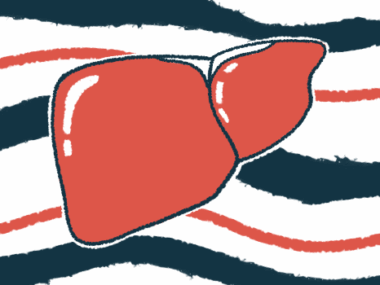Gut bacterium B. longum linked to better biliary atresia outcomes
Abundance of probiotic in early life improves outlook, study finds
Written by |

Levels of Bifidobacterium longum (B. longum), a well-known probiotic, in the gut are significantly reduced in children with biliary atresia, a study in Taiwan showed.
A greater abundance of the bacterium in the first six months of life was significantly associated with less liver damage and an 84% lower likelihood of needing a liver transplant.
“This suggests that early colonization and increasing B. longum levels in the gut could be a therapeutic strategy to improve the prognosis of patients with biliary atresia,” the researchers wrote.
Probiotics, which are found in yogurt, fermented foods, and dietary supplements, are live microorganisms thought to improve gut health.
The study, “Gut Bifidobacterium longum is associated with better native liver survival in patients with biliary atresia,” published in JHEP Reports.
Surgery is first line of treatment
Biliary atresia is a liver disease characterized by the absence or blockage of bile ducts, which carry the digestive fluid bile from the liver to the intestines. Symptoms usually appear within the first few weeks of life and include dark urine, pale stools, and jaundice (yellow discoloration of the skin and whites of the eyes).
Currently, the first-line treatment is Kasai portoenterostomy (KPE), a surgical procedure that creates a new tube to carry bile out of the liver directly to the intestines. Still, about half of patients who undergo KPE develop liver failure and need a liver transplant before they turn 2.
Gut microbiota are the vast community of friendly bacteria, fungi, and viruses that colonize the intestine and help to maintain a balanced gut function, protect against disease-causing organisms, and influence a person’s immune system.
Despite several biliary atresia studies addressing the potential impact of gut microbiota, “data are still insufficient to identify specific bacterial species that could affect long-term outcomes and have therapeutic potential,” the researchers wrote.
Th researchers collected and analyzed 42 fecal samples from 19 babies with biliary atresia, before KPE (13 samples) and after KPE at about 2 months (17 samples) and at 6-9 months of age (12 samples).
Another 40 fecal samples from age- and sex-matched healthy babies were collected at ages 2 months (18 samples) and 6 months (22 samples) as controls.
The study was conducted at the National Taiwan University Children’s Hospital from November 2015 to June 2023.The goal was to characterize the gut microbiota during the disease course and identify specific microorganisms that could impact disease outcomes.
Results showed that patients’ samples, both before and after KPE, exhibited significantly lower gut microbiota richness and diversity than healthy controls. Among children with biliary atresia, microbiota diversity was significantly increased after KPE relative to before the procedure, and showed at even greater raise at 6 months.
Differences between patients and healthy controls were also found in terms of bacterial genus, which comprises groups of closely related bacterial species. At both 2 months and 6 months, biliary atresia patients had lower proportions of the Bifidobacterium and Escherichia genera.
Before KPE, children with biliary atresia had a higher abundance of the genera Veillonella and Klebsiella than healthy children. After KPE, the levels of Bifidobacterium decreased and remained low at 6 months, while Enterococcus levels increased.
B. longum differences
Significant differences were also found in terms of bacterial species. Particularly, B. longum, a known probiotic, was found at significantly lower levels in patients relative to healthy controls at all time points.
Further analyses of patients’ samples showed that high B. longum levels were significantly associated with lower levels of GGT, a marker of liver damage, after KPE — “implying a potential protective role against bile duct injury,” the team wrote.
Of the 22 patients who were followed for a long term, nine received liver transplants, at a mean age of 11.2 months.
When comparing bacterial composition between those who did or did not undergo liver transplant, the team found that the abundance of B. longum was significantly higher before and after KPE in patients who survived with native liver.
In those who received a liver transplant, the bacterium was not detected until age 6 months, “indicating delayed B. longum colonization,” the researchers wrote.
In addition, patients with detectable B. longum before 6 months had significantly lower levels of bilirubin — another marker of liver damage — three months after KPE, and were 84% less likely to undergo liver transplant than those with undetectable B. longum.
“These results suggest that establishing B. longum during the early life of patients with [biliary atresia] is associated with favorable long-term outcomes,” the researchers wrote.
“Interestingly,” the researchers noted, all patients with early detectable B. longum were exclusively or partially breastmilk-fed, compared with only 44.4% of those without early B. longum detection. The bacterium was absent in patients fed infant formula.
Still, the rate of liver transplant was not significantly better for breastfed children compared with formula-fed children, indicating that “the factor contributing to better native liver survival may be attributed to the effects of B. longum on the gut microenvironment and immune system,” the researchers concluded.








